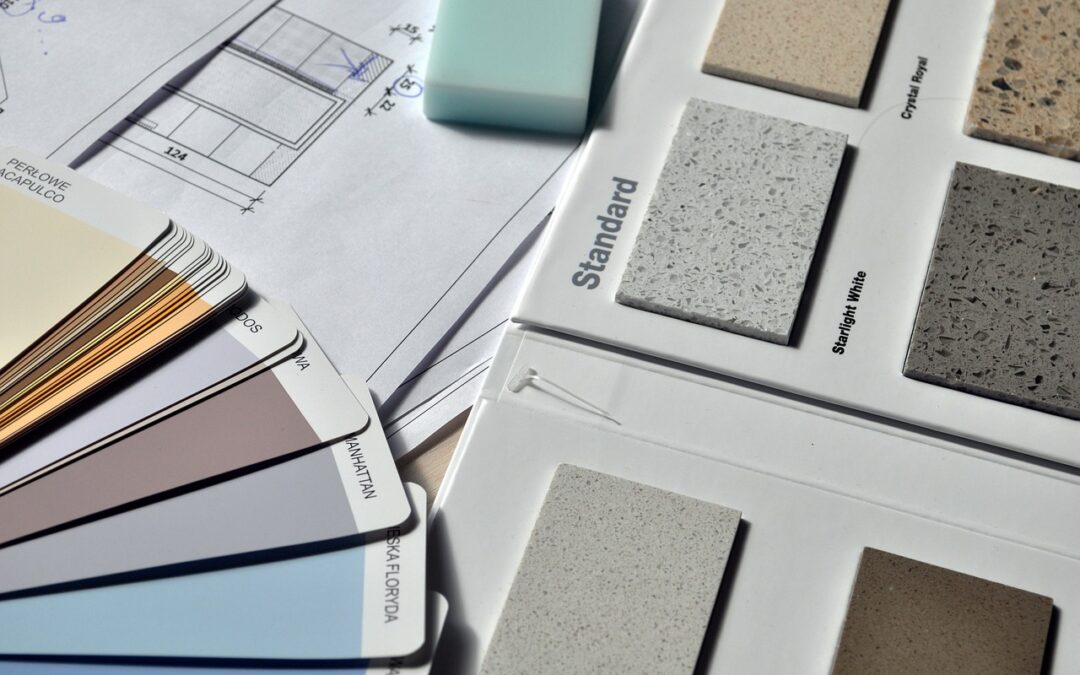No matter the scale of your construction project, engaging an interior designer from the start can be the difference between realizing your dream and waking up from a nightmare. Construction and interior design are integrally linked. When an interior designer and a contractor work together, magic can happen!
Building or Remodeling?
Whether you are building a new home, remodeling a room, or renovating the entire house, the expertise and experience an interior designer brings to the project saves time, money, and stress. Often when we think about interior design services, we may only think of aesthetics. However, there is so much more knowledge they bring to the project. Of course, you want your builder or tradesperson to be experts in their field. An experienced interior designer, especially one who holds construction licenses, will have relationships with trusted construction professionals. It’s much more efficient to choose your interior designer at the inception of your project. You only have that one relationship to build.
The relationship you have with your interior designer is quite different than one you might have with the contractors. It is much more personal. They invest much more time in getting to know you and your family. They are focused on your likes and dislikes, your interests and lifestyle, and how you want to use your home or room. Understanding all those things allows them to help you make decisions on everything, leading to a cohesive feeling throughout.
Construction and Interior Design
There are many details that the builder, or even an architect, may not consider. For example, there is a code to be met for the placement of electrical outlets. This typically specifies things like the minimum height from the floor and placement, e.g., every eight feet. Contractors will comply with code, but an interior designer will also consider the layers of lighting in the design. Ambient, task, natural and accent lighting are all influenced by anticipated furniture placement. This ensures outlets are placed where they are likely to be needed while still complying with the code.
This can be accomplished in several ways – where the “first” outlet is placed, for example, to start the measurements, or where an outlet may be added. It is so frustrating to need or want a table lamp near a chair and have to use an extension cord to plug it in! The same is true of ambient lighting, which is often overhead. The size of the room may indicate the need for additional lighting at the ceiling. Frequently, though, builders place one in the center of the room if there is one at all. Or they’re placed randomly, leaving weird options for furniture placement. The interior designer has the expertise to design an effective lighting plan to enhance the overall feel and function of the room.
Another area that reflects the balance between construction and interior design is the choice of fixtures: cabinets, countertops, appliances, and all the necessary items for the bathroom. Builders and contractors may have vendors they can point you to, but this requires an investment of lots of time on your part to search them all out, see what they offer, and do price comparisons. Or they might have a portfolio of cabinets, a portfolio of countertops, etc., that you can choose from. But what if you’re not crazy about their preselected choices?
Vendor Connections
Like their relationships with builders and contractors, interior designers have associations with vendors of all types. They have extensive knowledge about the advantages and disadvantages of a variety of building materials. And since they have in depth knowledge of your preferences – and budget – they can narrow the number of choices you need to navigate.
There are so many more ways that working with an interior designer means a less stressful project. A home with a welcoming ambience that suits the needs of the family or the updated room that fits cohesively with the rest of the home is definitely the goal. But perhaps one the most significant way an interior designer well-versed in both construction and interior design can reduce the stress associated with this kind of project is to be the liaison between you and all the tradespeople, keeping the project moving and on time, on budget, and addressing any “surprises.”
You can just enjoy the process and excitement of seeing your vision realized!
How Does an Interior Designer Fit Into the Construction Process?
Interior Designer vs. Construction Supervisor: What’s the Difference?
The Key Distinctions Between an Interior Designer and a Contractor

